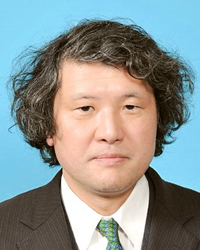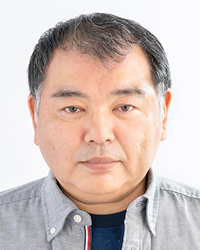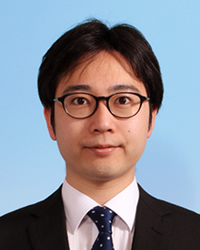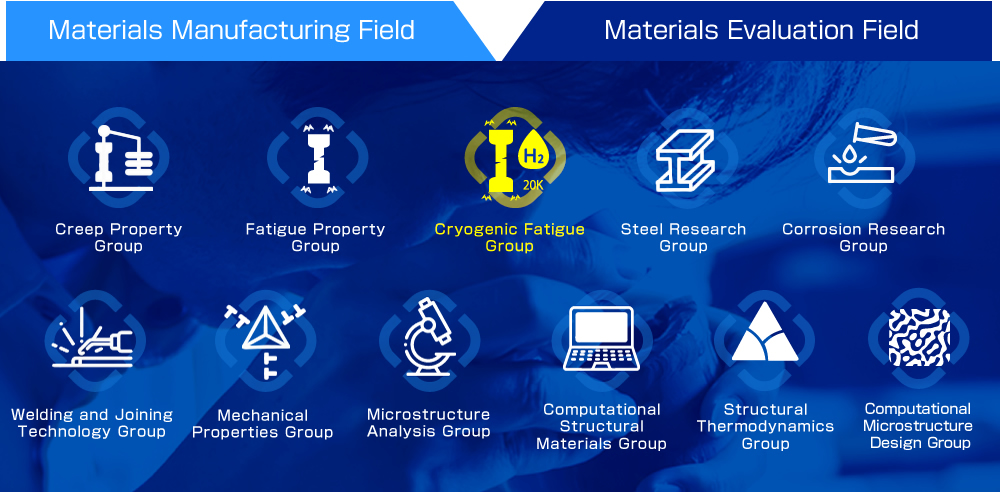 ↑Click on the icon to go to other groups
↑Click on the icon to go to other groups
Cryogenic Fatigue Group
About us
The Cryogenic Fatigue Group will (1) elucidate fatigue crack growth behavior, crack opening and closure behavior, and their temperature dependence in cryogenic environments, mainly for titanium alloys, nickel alloys and stainless steels, with a focus on rocket engines and hydrogen supply chains. (2) To elucidate the effect of hydrogen on fatigue properties and fatigue crack growth behavior in a wide range of temperatures, considering the special environment of liquefied hydrogen or cryogenic hydrogen gas, together with the mechanism of the effect. This will provide industry with data that will contribute to the development and design of liquefied hydrogen-related equipment and rocket engines, thereby contributing to the realization of carbon neutrality. In addition, (3) to contribute to resource recycling, we will develop methods for the recycling (remanufacturing) and reliability evaluation of machine structural parts (gears, springs, and welded joints).
Members
Masao Hayakawa
Group Leader, Cryogenic Fatigue Group, Materials Evaluation Field, Research Center for Structural Materials
Keyword : gears, springs, cylinders, carburizing, nitriding, low alloy carbon steel, tempered martensite, residual austenite, sliding fatigue, X-ray diffraction, eddy current testing, obsolete scrap, high temperature fatigue, heat resistant alloys
Yoshinori Ono
Principal Researcher, Cryogenic Fatigue Group, Materials Evaluation Field, Research Center for Structural Materials
Keyword : cryogenic temperatures, hydrogen, metallic materials, mechanical properties, deformation, fracture, hollow specimens , test facilities, data sheets![]()
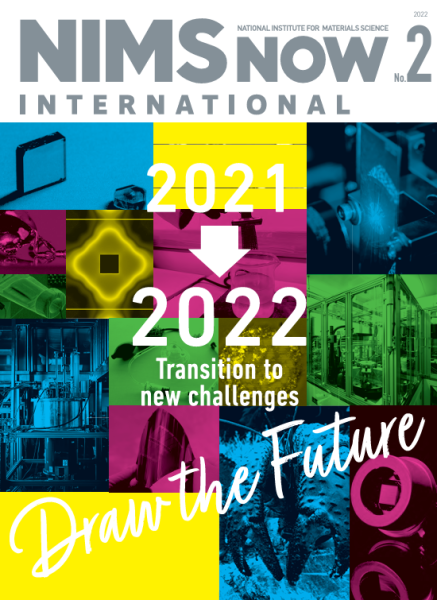
Susumu Meguro
Senior Researcher, Cryogenic Fatigue Group, Materials Evaluation Field, Research Center for Structural Materials
Keyword : copper, constantan, thermoelectric power generation, welded joints, high-temperature waste heat
Kentaro Wada
Senior Researcher, Cryogenic Fatigue Group, Materials Evaluation Field, Research Center for Structural Materials
Keyword : hydrogen embrittlement, high-pressure hydrogen gas, cryogenic temperature, pure nickel, austenitic stainless steel, metal fatigue![]()
